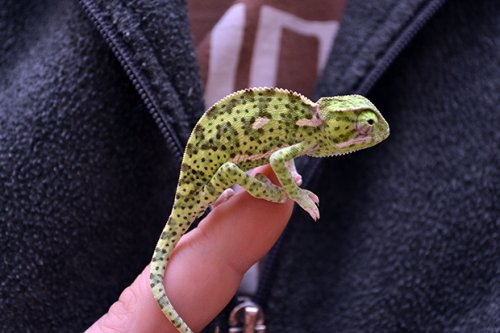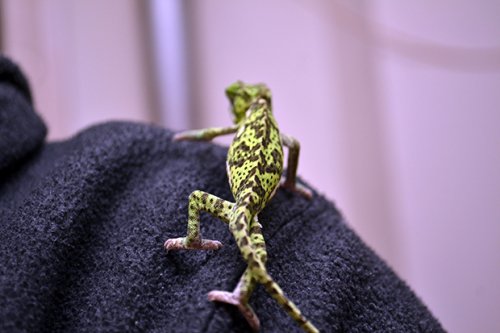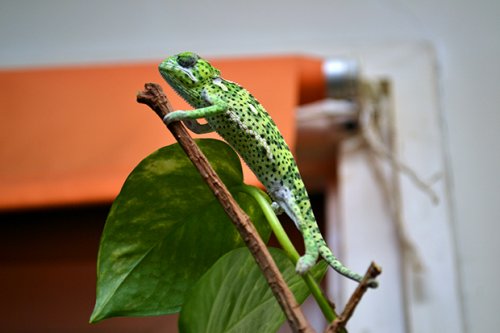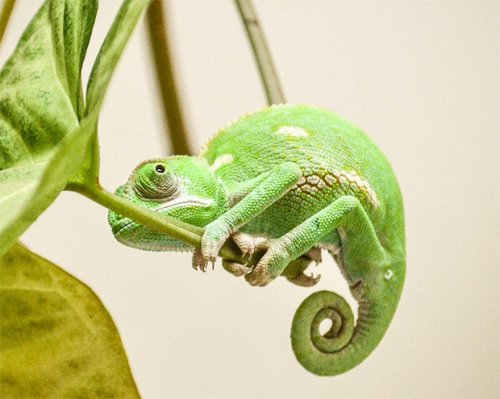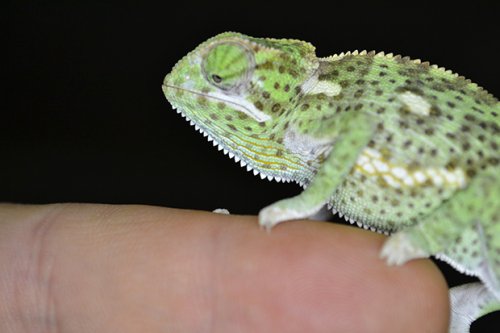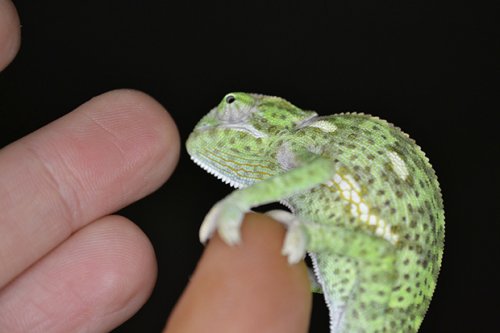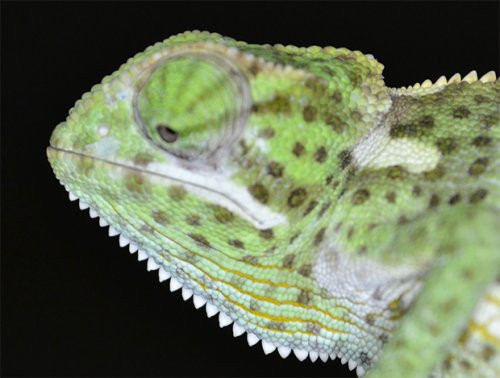Navigation
Install the app
How to install the app on iOS
Follow along with the video below to see how to install our site as a web app on your home screen.
Note: This feature may not be available in some browsers.
More options
You are using an out of date browser. It may not display this or other websites correctly.
You should upgrade or use an alternative browser.
You should upgrade or use an alternative browser.
Zip, the Chamaeleo Roperi
- Thread starter Zsani
- Start date
SSimsswiSS
Avid Member
Looks female. You wont know for sure til a little older. But I think the males of this species sport spurs on the hind feet.
Zsani
Member
Looks female. You wont know for sure til a little older. But I think the males of this species sport spurs on the hind feet.
I am told that Roperi species does not have spurs. That's the problem!
Psychedelic Chams
Established Member
Awesome looking cham pygmy species?
Psychedelic Chams
Established Member
Whatever he is he is a stunner thays for sure
Trace
Captain Awesome
While the roperi males do not have the tell-tale tarsal spur they do have a fairly prominent hemipenal bulge. Considering the age of this specimen and the lack of visual lump at the tail base, I'd likely say female. What colour is the interstitial skin on her gular?
The dilepis are a great species, particularly CH or CB ones. Have fun with her.
The dilepis are a great species, particularly CH or CB ones. Have fun with her.
kplatvoet
Member
She/He looks like Clifford when he get's mad at me - I was told when I bought him that Clifford is a male - Clifford get's a very orange gular - I've only had him out twice since I've got him- and he only gets it when I either get him out or put my hand too close while I'm placing silkworms. He thinks he's larger than he is-
I'm now not positive that Clifford is a male though - I hope to keep seeing picture of yours as she/he grows -
I'm now not positive that Clifford is a male though - I hope to keep seeing picture of yours as she/he grows -
Trace
Captain Awesome
The colour of the interstitial skin of the gular isn’t necessarily an indicator of gender. In some of the subspecies of dilepis the gular of the male will turn a white during the mating and/or wet season but during the rest of the year both sexes have the typical yellow/orange. Interestingly, Colin Tilbury states that female Chamaeleo roperi have red or purple interstitial skin as opposed to the orange in the female dilepis/quilensis. That means you have a regular dilepis or it could be a male. Considering Zips age, I’d still say you have a female. He should have more of a hemipenal bulge by now.
To be honest I’ve always thought Clifford was a female but I’ve been waiting for some more full body shots to confirm either way. If you could get some clear side view photos of the base of his/her tail I’ll be glad to offer an opinion.
I'm now not positive that Clifford is a male though - I hope to keep seeing picture of yours as she/he grows -
To be honest I’ve always thought Clifford was a female but I’ve been waiting for some more full body shots to confirm either way. If you could get some clear side view photos of the base of his/her tail I’ll be glad to offer an opinion.
kplatvoet
Member
Well since Sherlock turned out to be Sherly -(my Jackson) It wouldn't suprise me too much- Me getting a clear shot isn't likely to happen - but I'll try- He calmed down after his handling today quite quickly but I'm trying to keep it at a minimum till he gets a little older -
My first chameleon 40 years ago had a much bigger bulge but I don't know what kind he was but his coloration was similar .. . I really didn't want to deal with egg retention and such but either way he/she has been acting very healthy so maybe it will not be an issue- I guess I better start reading about laying bins- I'm assuming that they might need one sooner than a veiled as it seems the smaller ones seem to mature earlier-
My first chameleon 40 years ago had a much bigger bulge but I don't know what kind he was but his coloration was similar .. . I really didn't want to deal with egg retention and such but either way he/she has been acting very healthy so maybe it will not be an issue- I guess I better start reading about laying bins- I'm assuming that they might need one sooner than a veiled as it seems the smaller ones seem to mature earlier-
kplatvoet
Member
I'm no expert - from what I can tell and the recommendations from the breeder and on here the care is pretty much veild with more spraying and lots of plants- and places to hide- I've been dusting her crickets with plain calcium every day and feeding her a mixture of crickets - flies and silkworms and also giving him a salad which I haven't seen her eat- she does chomp on the leaves of the plants and my daughter gives her bearded dragon salad so she gets some of that -
From what I can tell Flapnecks come from almost all parts of Africa and different varities have adapted differently so the problem with care is figuring out where it originated and try to mimic as best you can - I kept Cliffords cage without much on the bottom so that it would be easy to clean - I'm going to change to give her a laying bin soon - I'm thinking that they would mature earlier but that is just a guess. I wasn't planning on breeding but there is a link in the care sheets that has some information - getting a healthy one seems to be a problem as the wild caught ones don't seem to do as well-
From what I can tell Flapnecks come from almost all parts of Africa and different varities have adapted differently so the problem with care is figuring out where it originated and try to mimic as best you can - I kept Cliffords cage without much on the bottom so that it would be easy to clean - I'm going to change to give her a laying bin soon - I'm thinking that they would mature earlier but that is just a guess. I wasn't planning on breeding but there is a link in the care sheets that has some information - getting a healthy one seems to be a problem as the wild caught ones don't seem to do as well-
Similar threads
- Replies
- 0
- Views
- 137
- Replies
- 0
- Views
- 68
- Replies
- 0
- Views
- 179
- Replies
- 0
- Views
- 85
- Replies
- 0
- Views
- 190


